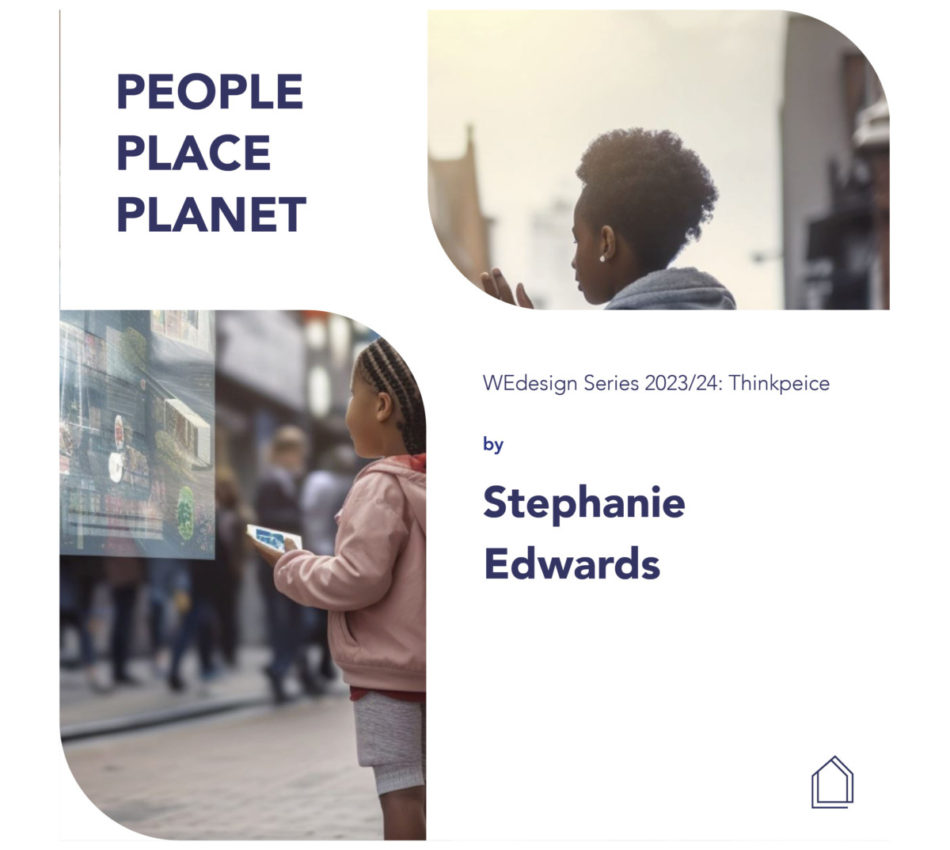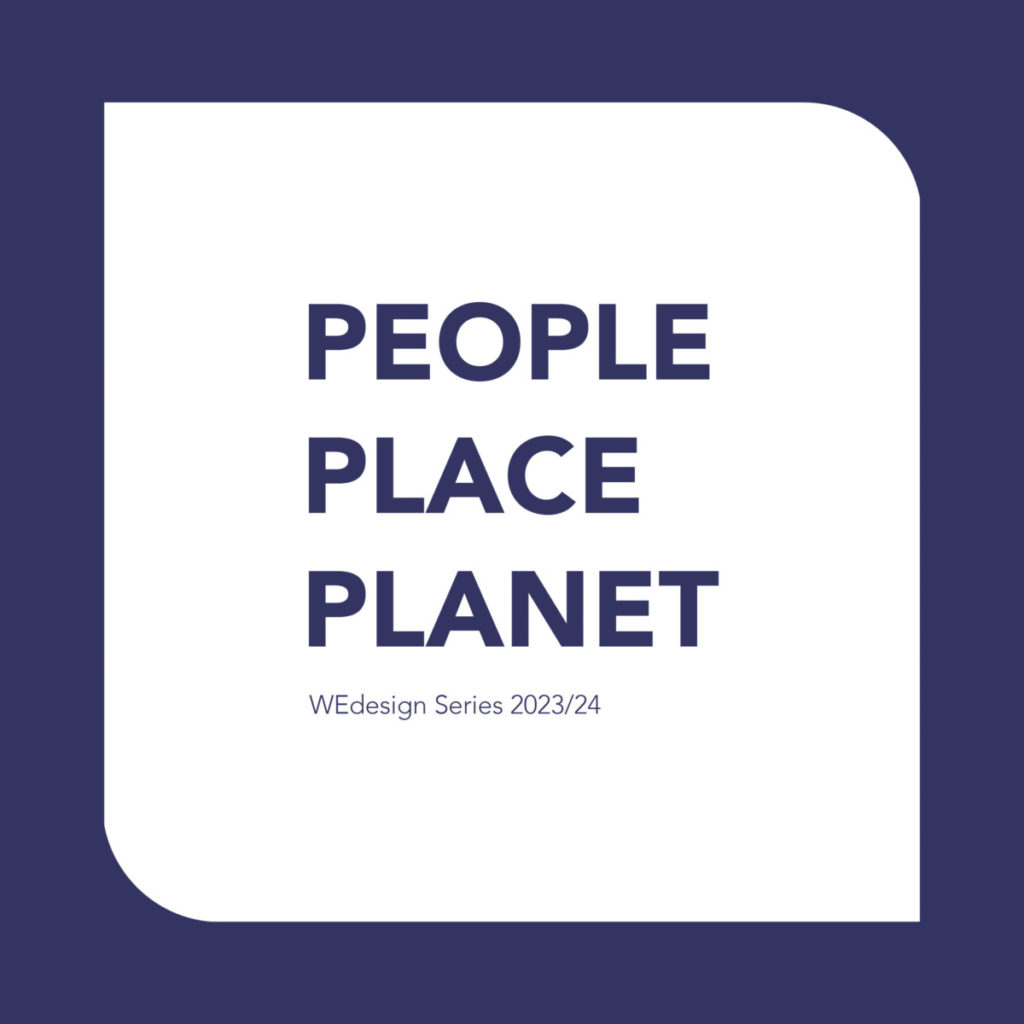Written by:
People, Place, Planet: Think Pieces, are a series of online blogs which will take our event series theme as a starting point and will offer an external voice and provocation.
In our the third edition of our People, Place, Planet: Think Pieces Stephanie Edwards shares her thoughts and ideas about People, Place, Planet through exploring the role of AI in co-designing our future cities.
Exploring Ai to Co-Design Our Future Cities
Imagine a cityscape where every element, from park benches to public transport, is an outcome of co-design – a process that actively involves users in the creation of their environment. Imagine a co-design process that engages 100 % of communities in an exciting and empowering manner? Here, residents are not passive recipients but active participants, shaping their living spaces through tools such as augmented reality (AR), a technology that superimposes digital information onto the real world, and AI-driven platforms. This engagement fosters a sense of ownership and connection, turning spaces into personal sanctuaries that also serve larger communities whilst understanding the environmental implications of their choices.
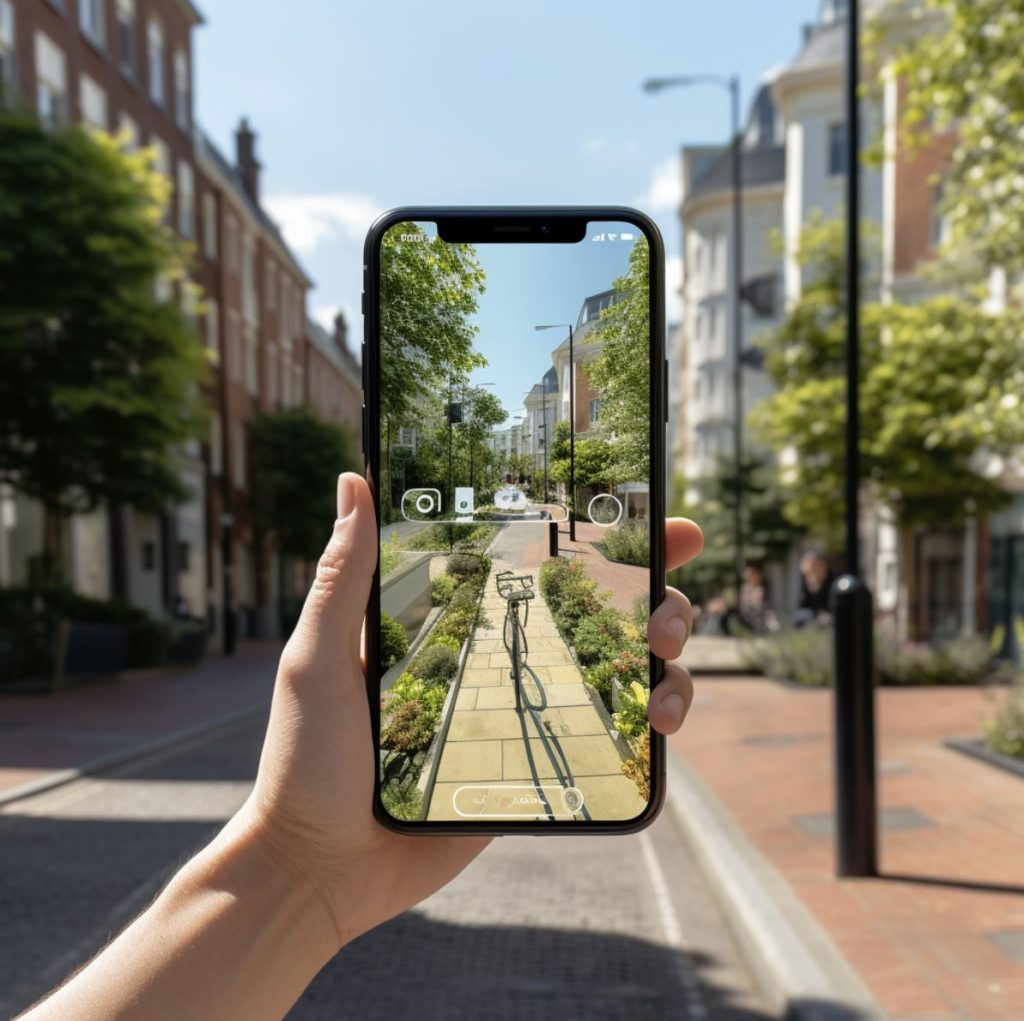
Harmonising Desires and Needs in Urban Design
In our modern world, the distinctions between individual preferences, communal requirements, and environmental imperatives are increasingly merging. Traditional urban design often falls short in balancing these aspects. The use of AI, or artificial intelligence, which refers to machines or systems that can perform tasks typically requiring human intelligence, facilitated co-design offers a holistic approach, harmonising these elements to create spaces that adapt to various needs. Imagine a city plaza that transforms from a vibrant marketplace in the morning to a tranquil communal workspace by day, and a lively open-air cinema at night, all seamlessly incorporating sustainable elements such as solar-powered pathways and efficient rainwater systems.

Fostering Community Engagement through Co-Design
At Urban Symbiotics, we facilitate residents to be architects of their environment. Envision a park where each bench and pathway is crafted through a collaborative process involving local inhabitants, Virtual Reality (VR) technology, which immerses users in a completely digital environment, Augmented Reality (AR), and Artificial Intelligence (AI). This methodology can deepen the sense of belonging, transforming generic areas into personal sanctuaries that resonate with community values. For instance, a neighbourhood park could feature AI-generated holographic play areas for children, with installations evolving based on the weather, environment, and user interaction.
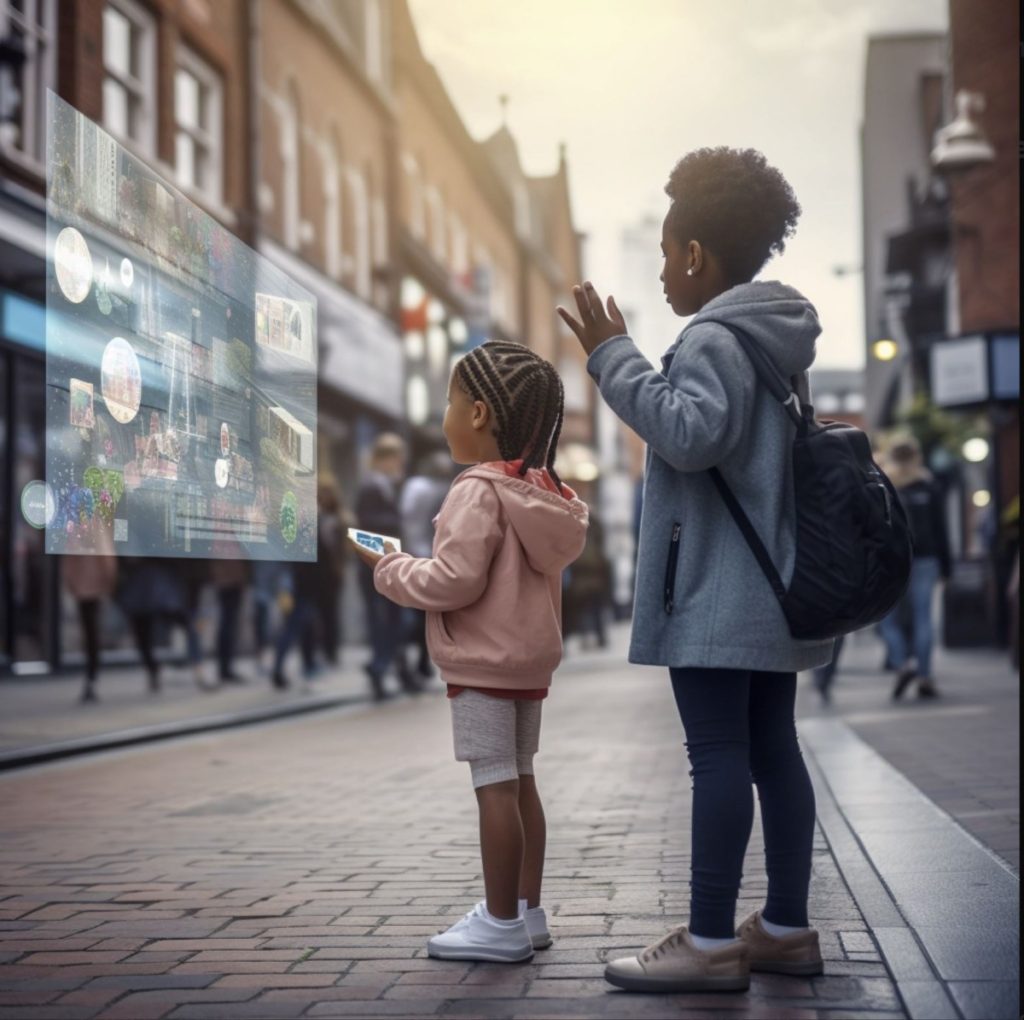
Leveraging AI and AR for Responsive Urban Spaces
In this new era of urban development, AI and AR are indispensable tools. They enable residents to pre-visualise and tailor public spaces to their liking, ensuring these areas genuinely meet communal aspirations. Picture an AI system that intelligently proposes locations for community gardens, with AR allowing residents to experiment with plant varieties and layouts, taking local ecology into account.
Integrating Social Value in Urban Life
Co-design can transcend aesthetic considerations, embedding social value and spatial equity into every urban element. This approach could manifest in residential complexes where AI algorithms ensure equitable access to natural resources and amenities, dynamically adjusting to maintain balance and inclusivity among residents.
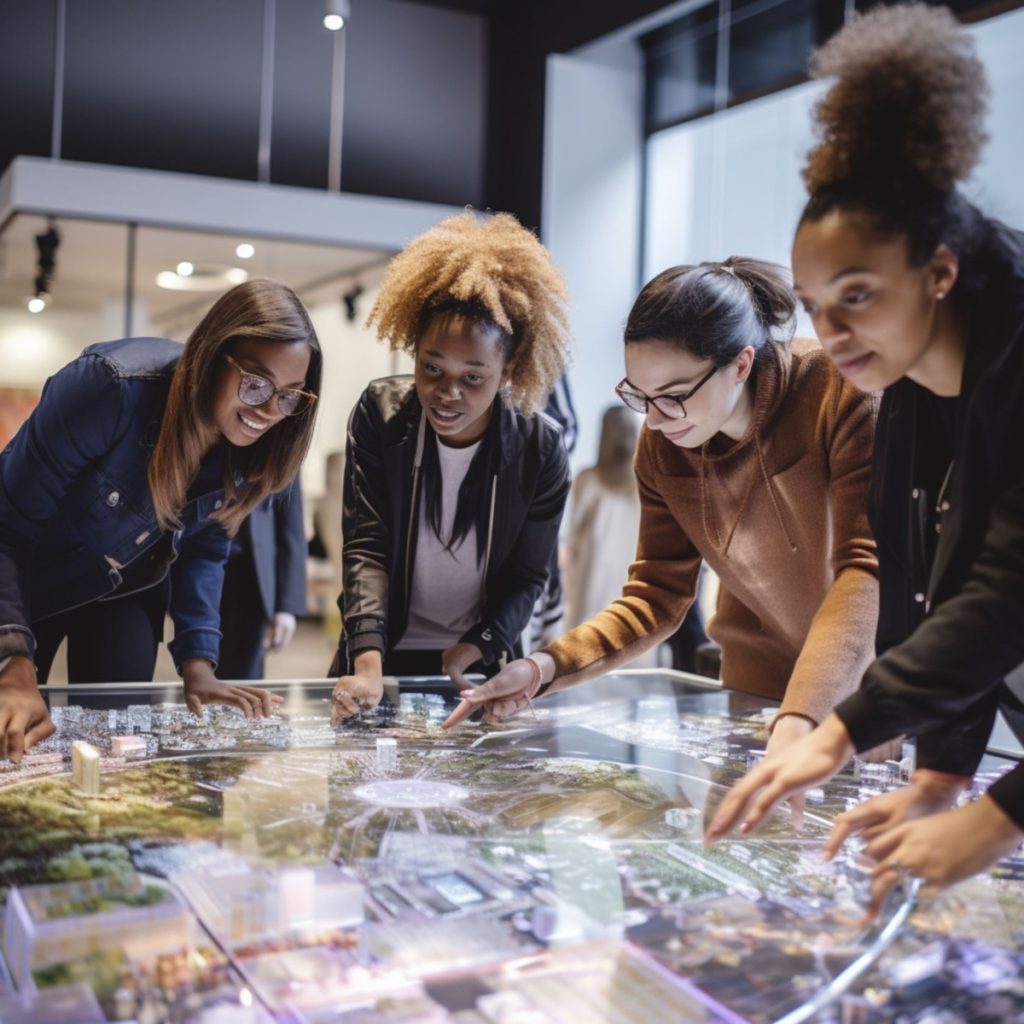
Pioneering Sustainable Urban Living
Our vision includes pioneering sustainable urban interventions. Imagine drone-delivered, or easily transportable green roofs and walls that travel across a neighbourhood, optimising greenery and air quality. These living installations not only enhance the urban landscape but also adapt to environmental needs and resident preferences, exemplifying the symbiotic relationship between technology and nature
A Day in an AI-Enhanced Urban Landscape
Visualise starting your day in a neighbourhood illuminated by AI-controlled bioluminescent trees, their colours shifting with the day’s rhythm. Your commute is streamlined by an AI-optimised transport system, offering efficiency and environmental mindfulness. Public spaces become personalised havens, from cafes anticipating your order to park benches aligning with your preferred view, all while championing sustainability.
The City as a Living Organism in the Evening
As dusk falls, the cityscape pulsates with life. AI transforms public areas into vibrant hubs reflecting community moods. Streets and parks come alive with interactive light shows and soundscapes, their patterns and themes fluctuating based on real-time community sentiment, creating atmospheres that range from soothing to exhilarating.
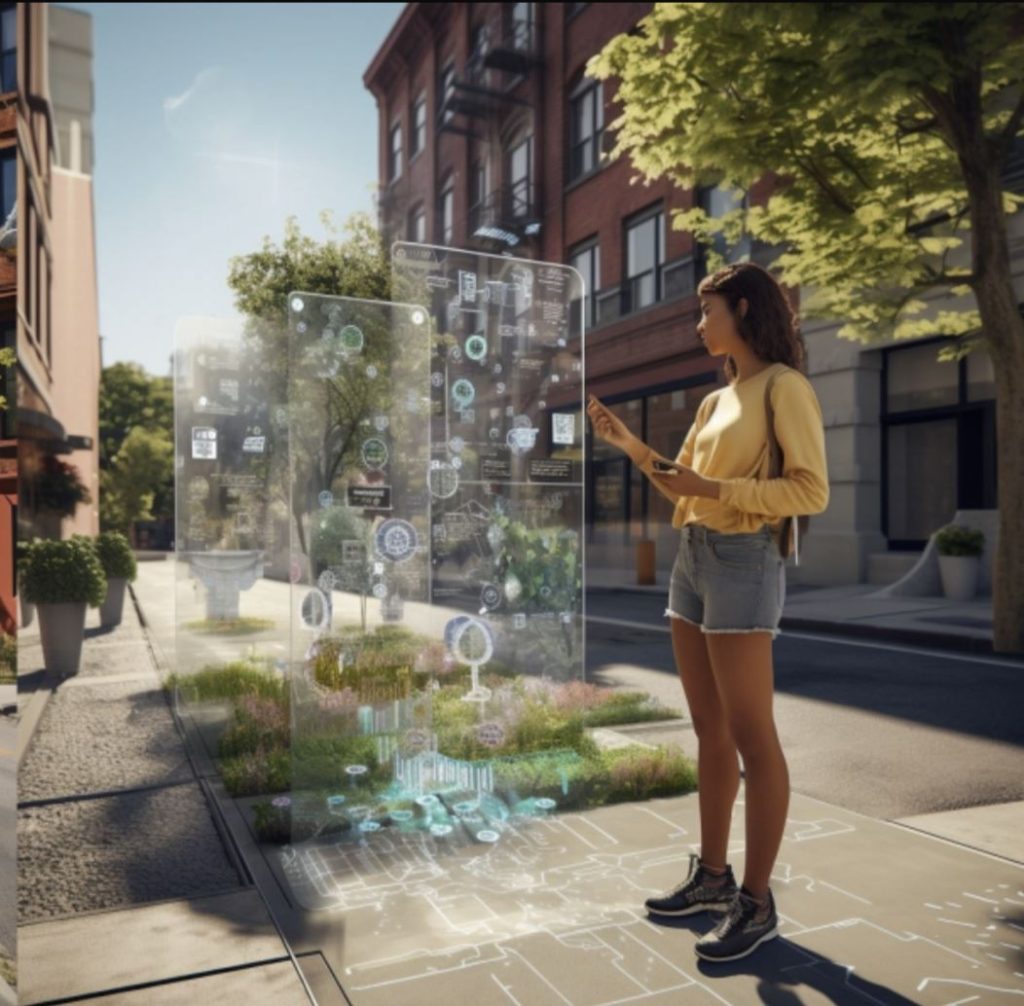
Embracing a Future of Co-Creation and Harmony
Using technology to co-design is more than a blue sky concept – it’s a tangible future. It redefines the role of urban designers and architects, positioning them as facilitators of adaptable, co-created spaces. This approach dissolves the traditional divide between professional dominance, individual and collective fulfilment, and environmental stewardship, portraying a future where everyone contributes to and benefits from a city that’s alive, responsive, and mindful of both its inhabitants and the planet
It will not just be a new chapter in placemaking but form a critical part of a narrative of living in harmony with our surroundings. It offers a glimpse into a future where technology, creativity, and sustainability converge to craft urban spaces that are not only efficient but also deeply resonant with the emotional and aesthetic needs of their communities. Welcome to the cities of tomorrow – vibrant, conscientious, and intrinsically connected to the dreams and needs of their people, places, and environment.
About the Author
Stephanie Edwards
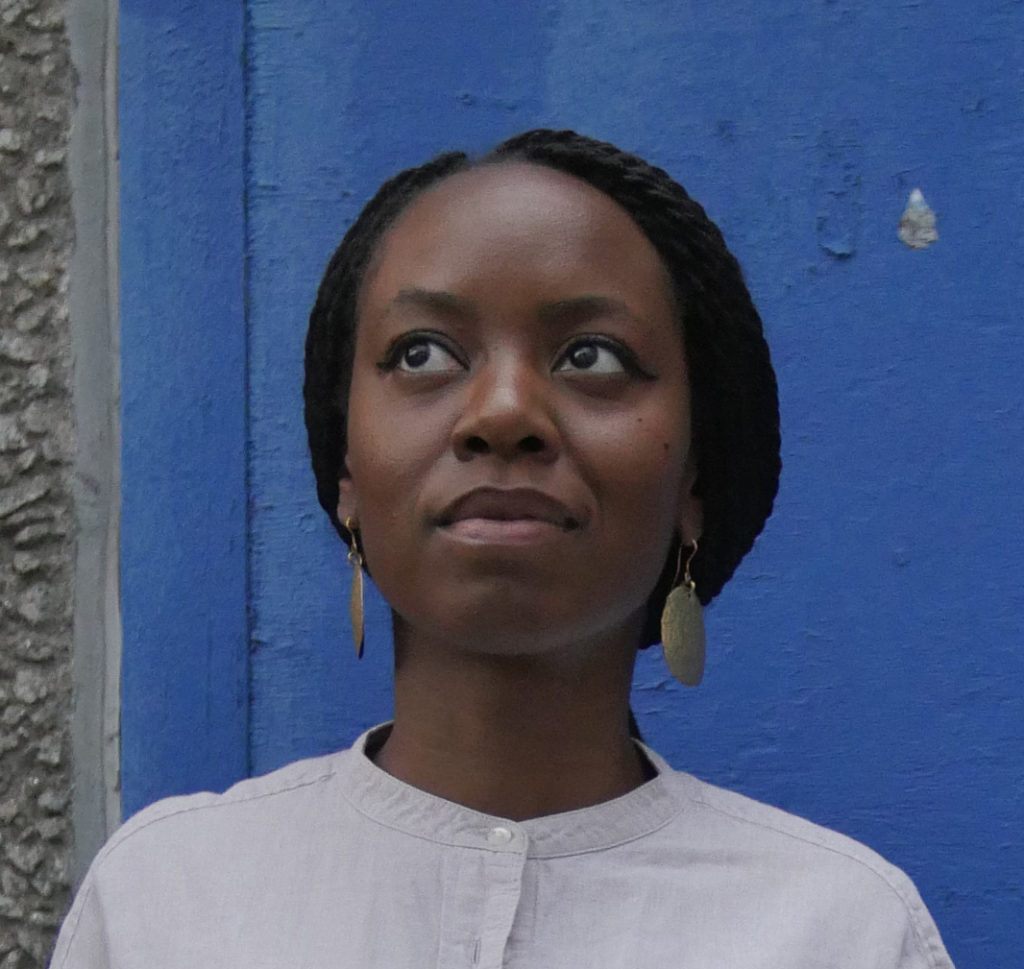
Stephanie Edwards is a user-focussed architect and urban designer and cofounder of Urban Symbiotics. She specialises in co-design at a variety of scales from the development of strategic masterplans, community place visions to meanwhile activation programmes amongst others. She is working on numerous co-designed regeneration strategies in London, the UK and globally with UN Habitat’s Global Future Cities Programme.
About the WEdesign 2023/24 Series: People, Place, Planet
People, Place, Planet is our theme for The Glass-House 2023/24 WEdesign series.
As we continue to shape our places, we are faced with the huge challenge of balancing our personal needs, the collective needs of our communities and those of our increasingly fragile planet.
This series will aim to identify and explore the opportunities and synergies that exist when we strive to balance people, place and planet in placemaking.
How can we think differently about how we shape our places? How can we collaborate more through design and placemaking to value and respect people, place and planet equally?
To find out more about the full 2023/24 series, visit our People, Place, Planet page on The Glass-House website.
WEdesign is The Glass-House’s annual series of free interactive public events, held online and in-person in cities across the UK, where we explore collaborative design in placemaking through discussion, debate and playful co-design activities.
To find out more about the WEdesign Programme, visit the WEdesign page on The Glass-House website.
WEdesign is supported by the Ove Arup Foundation.
